Maine’s coastline is absolutely loaded with lighthouse islands—rocky outposts that have guided ships through treacherous waters for centuries. While plenty of these beacons sit on remote islands that are completely off-limits to visitors, a surprising number can be reached by boat, ferry, or even on foot during low tide.
Each one tells its own story of maritime history, from dramatic rescues to keeper families who lived in complete isolation for months at a time. Most people assume all lighthouse islands are restricted or impossible to reach, but that’s not entirely true.
Some have been converted into museums, others offer overnight stays, and a few are accessible by public transportation. The trick is knowing which ones welcome visitors and how to actually get there without chartering a private boat. Here are 17 Maine lighthouse islands where you can actually set foot and explore these iconic maritime landmarks up close.
Wood Island
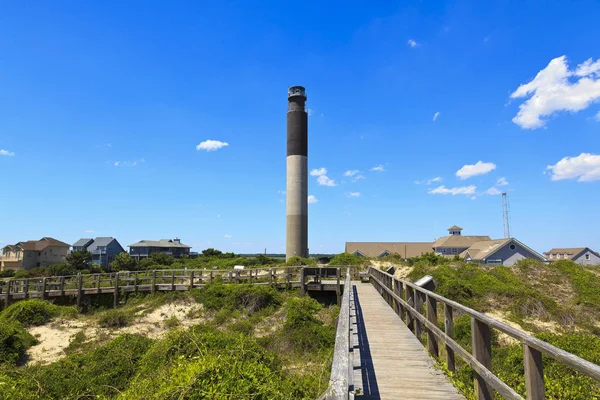
Just a short ferry ride from Biddeford Pool, Wood Island hosts one of Maine’s most accessible lighthouse experiences. The island opens to visitors during the summer months, offering guided tours of the 1858 lighthouse and the keeper’s house.
You can explore the entire 35-acre island on foot, discovering old military fortifications and enjoying views back toward the mainland. The ferry runs regularly during tourist season, making this one of the easiest lighthouse islands to visit.
Pemaquid Point

While technically a peninsula rather than a true island, Pemaquid Point feels isolated enough to count—especially when fog rolls in and cuts off views of the mainland. The 1827 lighthouse sits on dramatic granite ledges that are absolutely perfect for photography, though the rocks can be slippery when wet.
The lighthouse museum tells fascinating stories about shipwrecks and rescues, while the surrounding park offers picnic areas and coastal hiking trails.
Like Travel Pug’s content? Follow us on MSN.
Portland Head Light
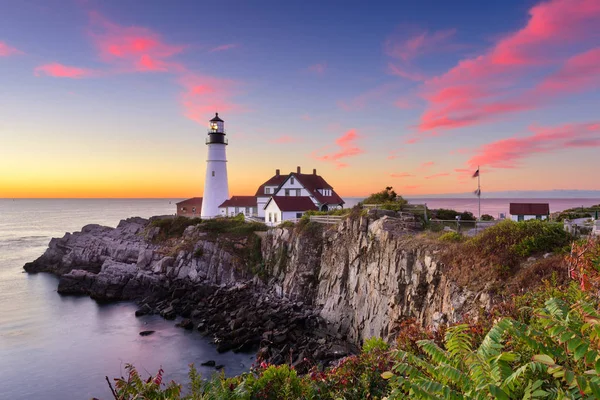
Located on Cape Elizabeth, this isn’t exactly an island, but the rocky headland feels like one when Atlantic swells crash against the cliffs below. The lighthouse dates to 1791 and has become Maine’s most photographed beacon—for good reason.
Fort Williams Park surrounds the lighthouse, offering walking trails and beach access where you can explore tide pools and watch lobster boats work the surrounding waters.
Nubble Light

Officially called Cape Neddick Light, this lighthouse sits on a small rocky island connected to the mainland by a narrow causeway that’s sometimes underwater during high tide. You can’t actually visit the lighthouse itself (it’s on private property), but Sohier Park on the mainland offers incredible views and photo opportunities.
The lighthouse looks especially dramatic during winter storms when waves crash over the rocky island.
Spring Point Shoreway
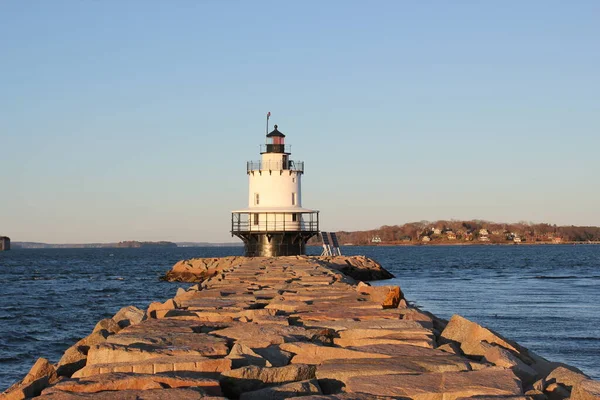
This lighthouse sits on a breakwater that you can actually walk out on—it’s like visiting an artificial island made of granite blocks. The 1897 lighthouse guards the entrance to Portland Harbor, and the breakwater walk offers views of multiple lighthouses and islands.
Fort Gorges sits on a nearby island, visible from the breakwater, while Casco Bay ferries pass by regularly carrying passengers to various island destinations.
Like Travel Pug’s content? Follow us on MSN.
Owl’s Head Light
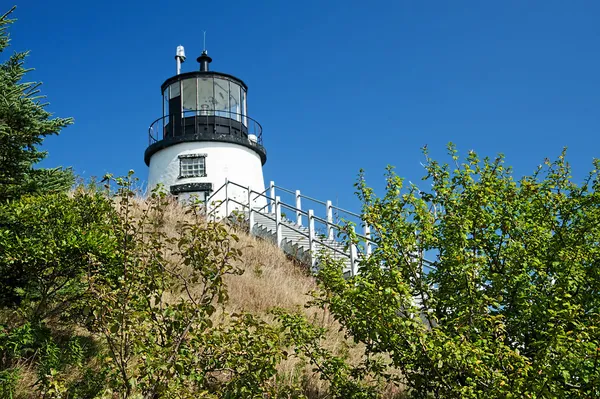
Perched on a rocky bluff overlooking Penobscot Bay, Owl’s Head Light offers one of Maine’s most spectacular lighthouse settings. While the lighthouse itself sits on the mainland, the views encompass dozens of islands scattered across the bay like green gems.
The short hike to the lighthouse passes through Owl’s Head State Park, where you can explore rocky shores and watch seals hauled out on nearby ledges.
Marshall Point Light
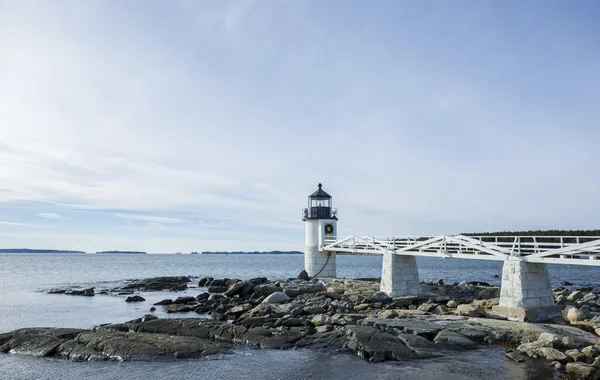
Made famous by the movie ‘Forrest Gump,’ Marshall Point Light sits at the end of a long wooden walkway that extends into the harbor like a pier. The lighthouse and museum occupy a small rocky point that feels almost island-like at high tide.
You can walk right up to the lighthouse, explore the keeper’s house museum, and enjoy views of the working fishing harbor where lobster boats come and go constantly.
Burnt Island Light
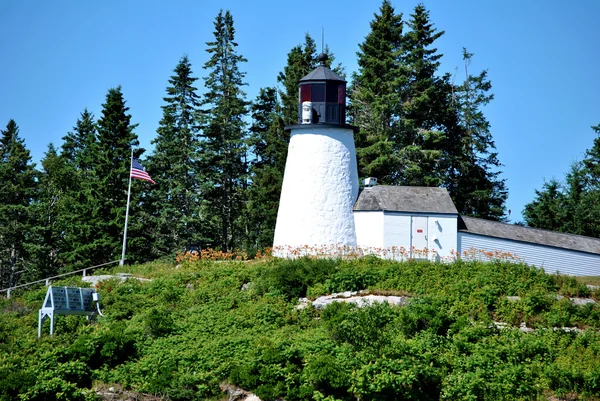
Accessible only by boat tour from Boothbay Harbor, Burnt Island offers one of Maine’s most immersive lighthouse experiences. The island hosts living history programs where costumed interpreters portray a lighthouse keeper’s family from the 1950s.
Visitors can explore the entire 30-acre island, tour the lighthouse and keeper’s quarters, and learn about the isolated life that lighthouse families once lived.
Like Travel Pug’s content? Follow us on MSN.
Seguin Island Light
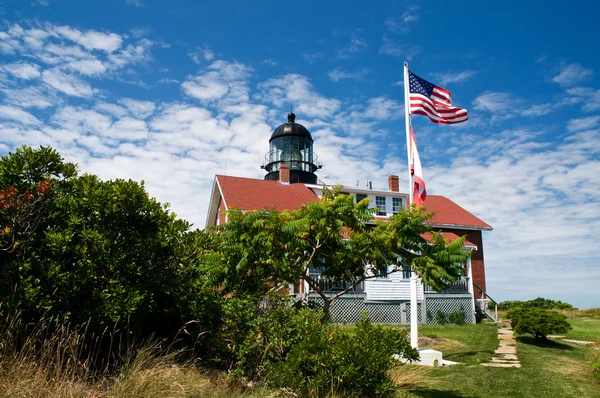
Located three miles offshore from the mouth of the Kennebec River, Seguin Island requires a boat trip but welcomes visitors during summer months. The island’s lighthouse dates to 1857 and sits 180 feet above sea level, offering commanding views of the surrounding ocean.
Friends of Seguin Island operate tours and overnight programs where visitors can stay in the restored keeper’s house and experience island solitude.
Monhegan Island Light
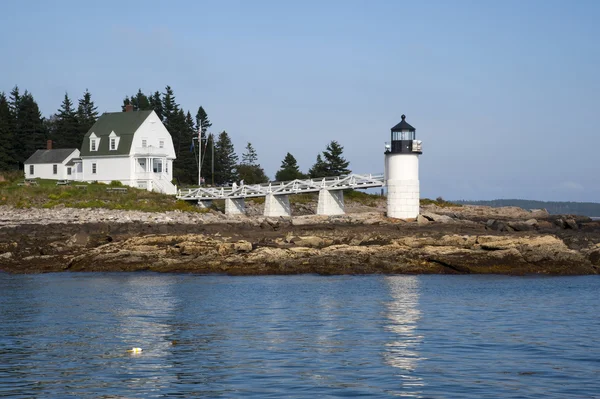
The ferry to Monhegan Island from Port Clyde takes about an hour, but the trip is worth it for the lighthouse alone. The 1850 beacon sits atop dramatic cliffs overlooking the open Atlantic, while the island itself offers hiking trails, artist studios, and a community that still lives much like coastal Maine did decades ago.
You can explore tide pools, watch puffins during nesting season, and experience true island isolation.
Doubling Point Light
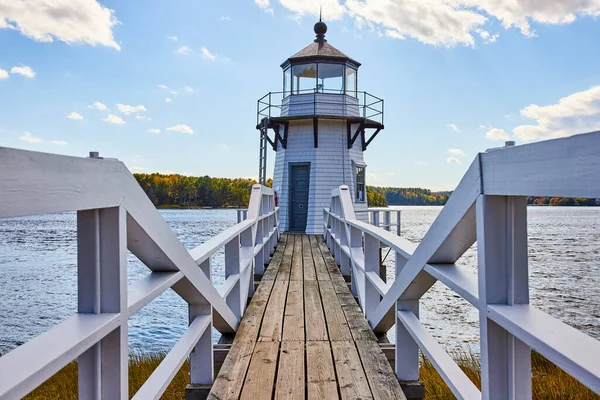
Located on the Kennebec River, this lighthouse sits on a point that becomes an island during high tide. The 1898 beacon is one of the few Maine lighthouses still actively maintained by the Coast Guard.
While the lighthouse itself isn’t open for tours, the surrounding area offers walking trails and river access where you can explore the rocky shoreline and watch river traffic heading to Bath Iron Works.
Like Travel Pug’s content? Follow us on MSN.
Whitehead Island Light
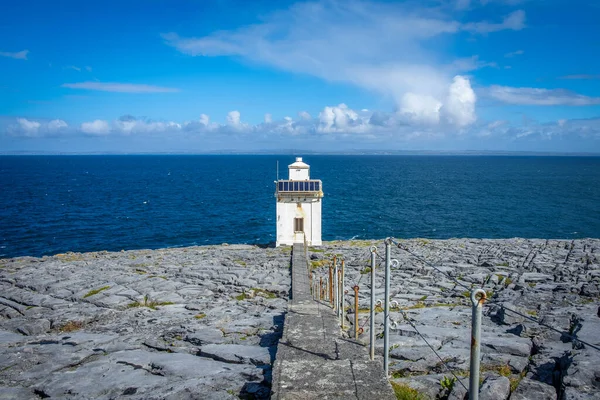
Accessible by private boat or charter from Spruce Head, Whitehead Island offers a more adventurous lighthouse visit. The island hosts a restored lighthouse and keeper’s house, plus hiking trails that circle the entire rocky outcrop.
Seals and seabirds are common here, and the views back toward the mainland show just how isolated lighthouse keepers once were during winter months when ice made boat travel impossible.
Franklin Island Light

This offshore lighthouse near Friendship requires boat access but rewards visitors with incredible solitude and seabird watching opportunities. The automated lighthouse still operates, guiding vessels through Muscongus Bay, while the surrounding waters teem with lobster boats and pleasure craft during summer months.
The rocky island supports nesting seabirds and offers tide pooling opportunities during low water.
Matinicus Rock Light
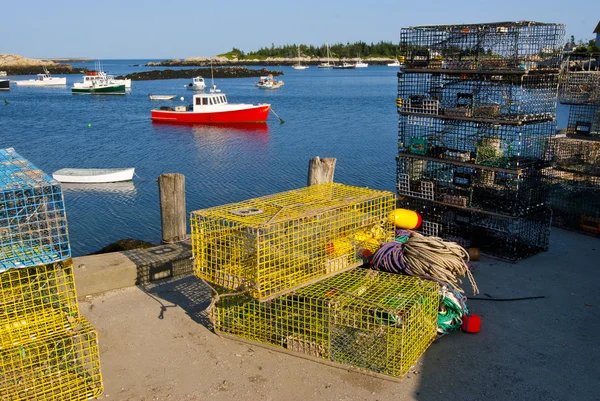
Perhaps Maine’s most remote lighthouse island open to visitors, Matinicus Rock sits 22 miles offshore and requires a substantial boat trip to reach. The island serves as an important puffin nesting site, and the National Audubon Society operates tours during the breeding season.
The lighthouse dates to 1827, and the island’s isolation means wildlife viewing here is absolutely spectacular—if you can handle the boat ride.
Like Travel Pug’s content? Follow us on MSN.
Two Bush Island Light
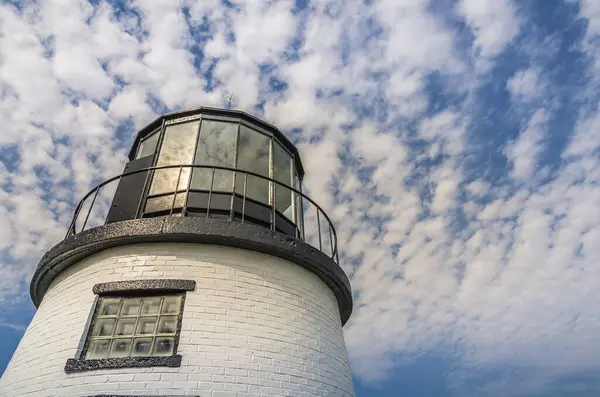
Located in Penobscot Bay, Two Bush Island requires private boat access but offers one of Maine’s most pristine lighthouse experiences. The automated beacon continues operating while the island remains largely undeveloped, providing habitat for seals and seabirds.
The rocky shores offer excellent tide pooling, and the views encompass dozens of other islands scattered across the bay.
Goose Rocks Light

This lighthouse sits on a tiny ledge in the Fox Islands Thorofare, accessible by kayak or small boat during calm conditions. The automated beacon warns vessels away from the dangerous rocks, while the surrounding waters offer some of Maine’s best sea kayaking.
The lighthouse appears almost to float on the water during high tide, creating dramatic photo opportunities for boaters willing to make the trip.
Great Duck Island Light
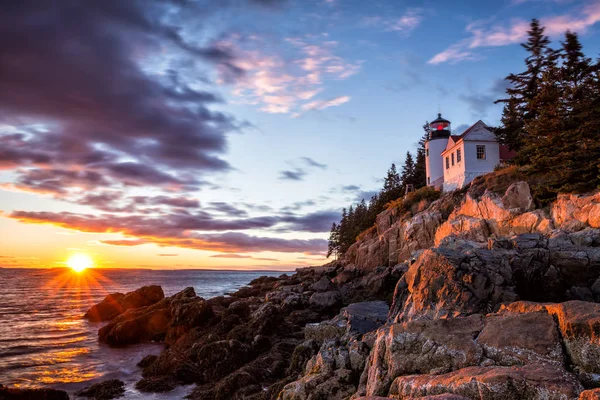
Located near Acadia National Park, Great Duck Island requires a boat charter but offers incredible wildlife viewing along with lighthouse history. The College of the Atlantic operates a research station here, studying seabird populations and marine ecosystems.
Visitors can tour the lighthouse and learn about ongoing conservation work while watching puffins, guillemots, and other seabirds that nest on the island’s cliffs.
Like Travel Pug’s content? Follow us on MSN.
Maritime Memories Made Accessible
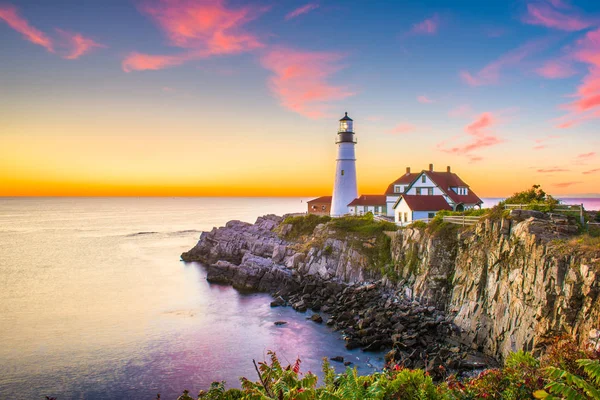
These Maine lighthouse islands prove that some of the state’s most iconic maritime landmarks remain surprisingly accessible to determined visitors. While reaching them might require ferry rides, boat charters, or careful tide timing, each offers a unique glimpse into Maine’s lighthouse heritage that you simply can’t get from viewing platforms on the mainland.
Some provide museum experiences with guided tours and historical interpretation, while others offer the raw experience of standing on isolated rocks where lighthouse keepers once lived and worked in conditions that tested human endurance.
Whether you’re island-hopping by ferry, paddling a kayak through protected waters, or chartering a boat for offshore adventures, these lighthouse islands represent some of Maine’s most rewarding maritime destinations—places where history, natural beauty, and the romance of lighthouse keeping come together in settings that remain largely unchanged since the days when these beacons were the difference between safe harbor and disaster.
More from Travel Pug

- 20 Best Beach Towns in the Carolinas
- 13 Destinations Where Tourists Regularly Regret Their Trip
- 20 Destinations That Are More Magical Without an Itinerary
- 20 Underrated Adventures That Belong on Your Travel List
- 20 Cities Where You Should Just Wing It, No Planning Required
Like Travel Pug’s content? Follow us on MSN.
